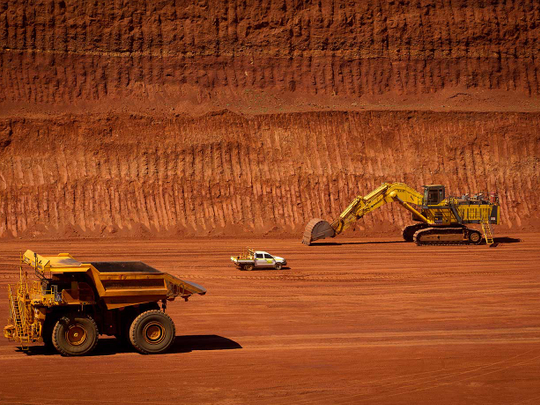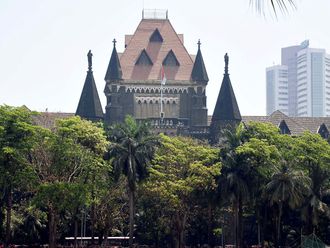
Sydney: Rio Tinto on Thursday posted an annual net loss of $866 million (Dh3.2 billion) in what the world’s number two miner said was a “highly challenging environment” as commodity prices plunge and a growth slowdown in key market China bites deep.
And in a reflection of the painful trading conditions, the firm joined other large players including Swiss giant Glencore and Brazil’s Vale in slashing its dividend payouts to shareholders as it looks to shore up its balance sheet.
The dire result compared with a $6.53 billion net profit in 2014 and comes as markets — particularly commodities — are hammered by a collapse in global demand, chiefly from China where economic growth is at a 25-year low.
Underlying profit in the 12 months to December 31, a measure Melbourne-based firm miner prefers, slumped 51 per cent to $4.54 billion, from $9.31 billion previously.
The company, which is heavily reliant on iron ore, said it was dumping its progressive dividend policy, in which shareholders are given gradually higher payouts.
It announced a 2015 full-year return of 215 US cents, the same as last year, but said it would fall to no less than 110 US cents this year.
“With the continuing uncertain market outlook, the board believes that maintaining the current progressive dividend policy would constrain the business and act against shareholders’ long-term interests,” Rio chairman Jan du Plessis said.
The Anglo-Australian firm, which like other miners has been forced to tighten its belt owing to the commodities crash, said it was slashing costs by $1.0 billion this year and hoped to cut another $1.0 billion in 2017.
Capital spending would be cut by $3.0 billion over 2016 and 2017 to $4.0 billion and $5.0 billion respectively.
“Against a highly challenging environment, Rio Tinto delivered a strong performance in 2015 with underlying earnings of $4.5 billion,” chief executive Sam Walsh said in a statement.
“The continued deterioration in the macro environment has generated widespread market uncertainty.”
Significant challenges
Rio and rival BHP Billiton, the world’s biggest miner, were placed on negative watch by ratings agency Standard & Poor’s this month as the dive to multi-year lows of key metals hit income.
S&P said the negative watch was put in place with an eye on Thursday’s earnings release, warning of further downgrade “if the company does not take supportive measures amid the currently weak commodity prices pressuring its cash flows”.
The price of iron ore tumbled to below $40 a tonne late last year, an 80 per cent drop from its 2011 peak near $200, while the price of other materials have also dived.
The sharp plunge in iron ore was reflected in Rio’s underlying earnings for the metal, which dropped 51 per cent to $3.95 billion for 2015.
Underlying earnings for aluminium slipped 10 per cent, copper and coal division dived 67 per cent, and diamonds and metals sank 30 per cent.
Reflecting on last year, Rio said the mining industry faced “significant challenges” and noted that while growth in developed countries strengthened, particularly in Europe, the overall pace of expansion was moderate and “insufficient to sure global trade”.
Looking forward to this year, the company said although there was economic consensus pointing to a moderate improvement in global growth, “volatility in financial and oil markets is a strong sign that macroeconomic risks abound, with geopolitical concerns also not far in the background”.
Rio shares closed 1.25 per cent lower to Aus$40.99 ahead of the results. The miner’s share price has plunged almost 30 per cent since the start of 2015, while BHP has almost halved.
BHP is due to report its earnings on February 23.












